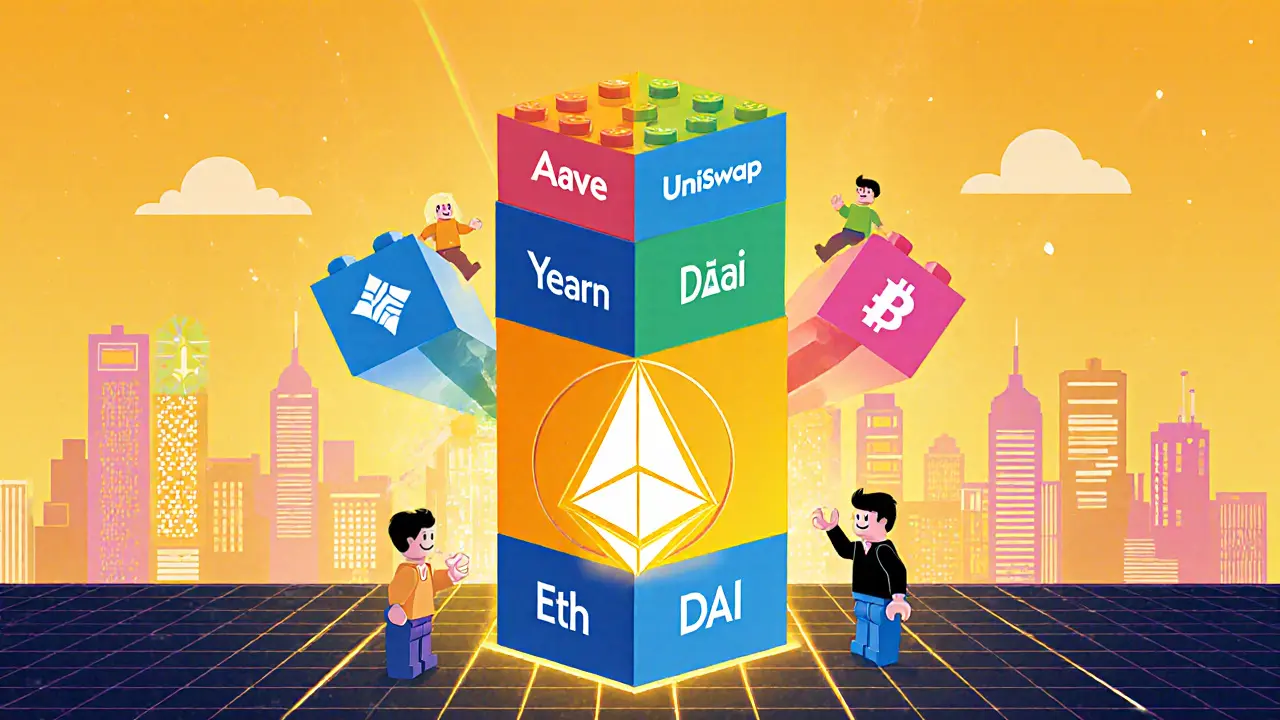Money Legos: How Modular Crypto Builds Financial Systems
When people talk about Money Legos, modular financial components on blockchain that can be combined like building blocks. Also known as DeFi building blocks, it enables users to stack protocols—like lending, swapping, and staking—without starting from scratch. This isn’t science fiction. It’s what happens when Uniswap v3 on Celo connects with a wrapped Bitcoin token, and that token gets used as collateral in a lending pool on Kava. You’re not just trading crypto—you’re assembling financial machines out of open-source parts.
Money Legos work because blockchains like Ethereum, Celo, and IOTA EVM let different apps talk to each other. A smart contract, self-executing code that runs on blockchain networks without intermediaries on one chain can trigger actions on another. That’s how you get a DEX like Wagmi (IOTA EVM) letting users swap bridged assets without paying Ethereum gas. But not all legos fit. Some, like IceCreamSwap (Blast), have zero volume because no one built the next piece. Others, like HB DEX, feel outdated because they don’t connect to anything beyond their own wallet. The real power comes from interoperability—when a wrapped asset custody system like WBTC lets Bitcoin enter Ethereum DeFi, or when a stablecoin on Celo pays a farmer in Kenya based on weather data from a parametric insurance, smart contract that automatically pays out when conditions are met, like rainfall falling below a threshold contract.
But here’s the catch: Money Legos only work if the pieces are real. Many projects pretend to be legos but are just empty boxes. Coinbit collapsed because its liquidity vanished. SharkSwap has no team and no volume. Edom (EDOM) has fake market data. These aren’t building blocks—they’re plastic toys that look like bricks but crumble under pressure. The legos that survive are the ones with actual users, real trading volume, and open documentation. You can’t stack a scam on top of a DEX and expect it to hold.
What you’ll find below isn’t a list of every crypto project. It’s a curated look at the legos that actually snap together—and the ones that don’t. Some posts show you how Uniswap v3 on Celo works for cross-border payments. Others warn you why Wagmi (Kava) is practically unused. There are reviews of real exchanges, scams to avoid, and explanations of how custody models make wrapped assets possible. This isn’t theory. It’s what’s working, what’s broken, and what you should never touch in 2025.
How Composability Drives DeFi Innovation
Composability lets DeFi protocols connect like Lego blocks, enabling users to stack financial services on top of each other. This innovation drives faster development, higher yields, and unprecedented capital efficiency-but also introduces systemic risks.
Details +